Manga Terminal at full speed contributes to emission reductions
Feb 3, 2022
The most northern liquefied natural gas (LNG) import terminal is located in Tornio, Finland. Its constantly growing volume and increasing truck traffic require well-functioning process automation and trustworthy terminal management. Valmet supports the business with its automation and logistics expertise.
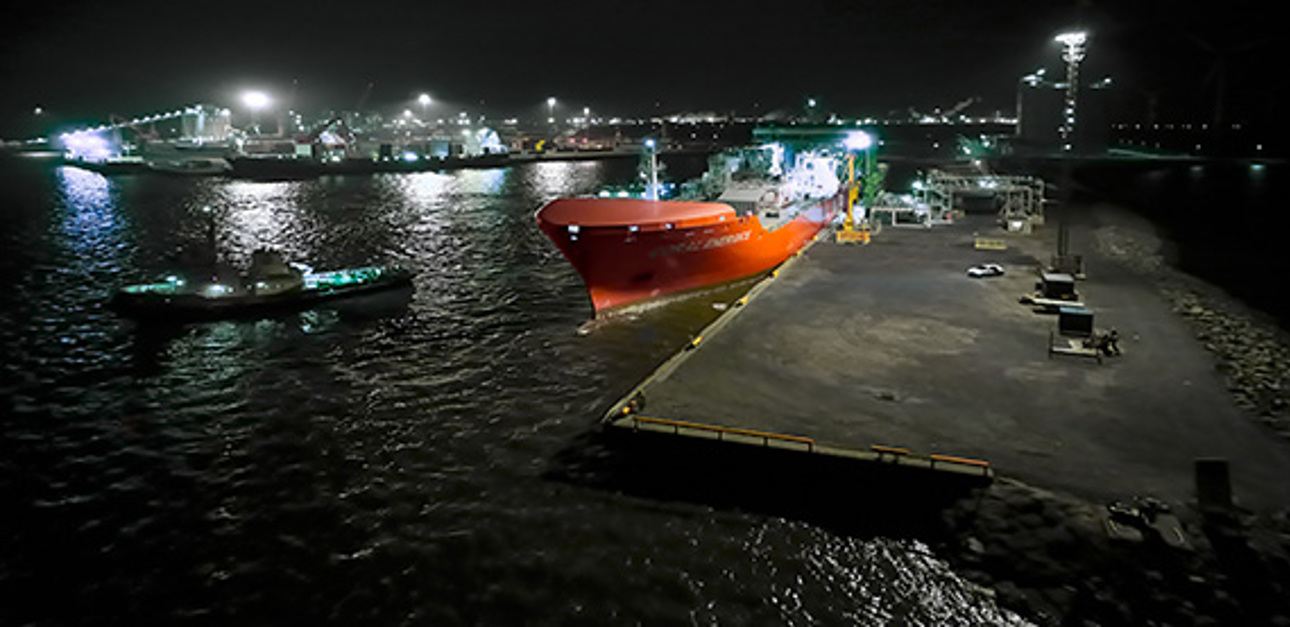
In Tornio, clean energy for industrial sites is ensured with the delivery of LNG. A vessel delivers LNG regularly to the terminal. It is stored in a specially manufactured 50,000 m3 tank. Daily, tens of trucks load LNG and transport it from there to filling stations and other locations.
The Manga Terminal owners – Outokumpu, SSAB, Gasum and EPV Energia – naturally receive their deliveries. From the terminal, there is one pipeline running to the Outokumpu steel factory site. The delivery of the clean energy must be accurate and timely to support the production of rustproof steel and ferrochrome.
Running the continuous operation
The terminal has a lean organization with fewer than 10 persons. You can sense the enthusiastic mood in the control room, the heart of the terminal, where all staff collects in the morning to discuss the coming day. When is a vessel expected to arrive? What is the time schedule for the trucks? Which additional projects should be handled that day?
The process is overseen by two operators in each shift with help of the automation system, Valmet DNA. Marko Kontio, Terminal Manager, is familiar with the system. From his perspective, reliability is the key issue.
The terminal is run by Mika Kolehmainen, CEO. “I put complete trust in the skills of our operators. As experienced professionals, they are thoroughly familiar with the process. We cannot afford any time of interruption. One of our requirements was high availability – and we got it. From time to time, I follow the process from my own office or from home,” Mika says.
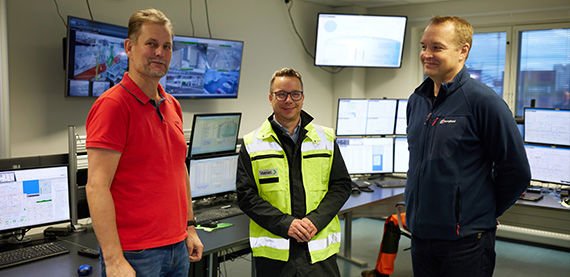
Marko Kontio, Jani Hautaluoma and Mika Kolehmainen.
Flexible gard change
The operators are regular users of the Valmet DNA automation system. Further, they also have to stay up to date on the logistics in the terminal using Valmet DNA Integrated Operations. Another area of responsibility is to support subcontractors, check that they have the necessary permits and a radio phone when they go to the site with a high explosive risk.
Tuomas Nissinen and Jarmo Hoikka, both operators, work as a team together in the control room and in the field, if necessary. The following shift will be taken care of by their colleagues Onni Harri and Vesa Barsk. When changing shifts, the most important information is shared between the teams.
For this task, Valmet DNA Report Diary supports operators and is in use daily. The tool is used to communicate with others. All essential information is noted there. Tuomas Nissinen states: “When we change shifts with our colleagues, I used to go through the diary to check all that had happened when I left the terminal. It gives me valuable information to stay on top of what’s been going on.”
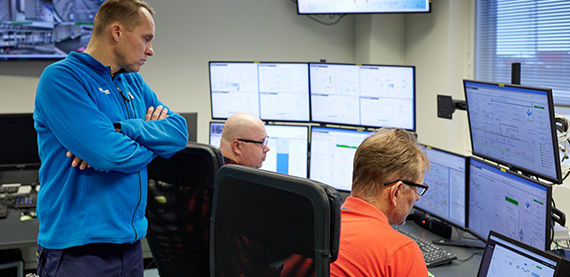
Jarmo Hoikka, Tuomas Nissinen and Marko Kontio.
“One of the best features is the DNA Historian, the so-called ‘time machine’. It allows you to check the past accurately – every minute or even every second. I am able to go back in the history and see what has happened and find the root cause. Our target is to utilize the data and learn from that,” Marko Kontio states.
“With the help of the automation system, we get energy consumption automatically measured on a regular basis. This helps our workload. We also receive reports about emissions trade that are needed for the authorities.”
Increasing truck loads
The Manga Terminal is the first one offering cloud connections for LNG trucks. The sequences of Valmet’s automation systems are connected through Valmet Industrial Internet to provide permits to truck loads via cloud services. The Industrial Internet services connect the terminal users with the operators. Today, the operators are no longer involved in making any bookings. The logistics companies make those. Then, the terminal follows the bookings made in Valmet DNA Integrated Operations. Afterwards, information about the deliveries is transferred automatically to the terminal’s invoicing system.
Marko Kontio explains: “DNA Integrated Operations is a brilliant system for terminal management. The transport companies book the capacity and loading time. The order number is directly saved in the Integrated Operations tool where the truck drivers are able to see it. Everything goes smoothly.”
DNA Integrated Operations is in use in the control room. Operators are able to see which truck companies are coming at what time. If necessary, the operators can book a free slot in the loading dock for service work, for instance. Additionally, more trucks can be clearly served when they don’t have to wait.
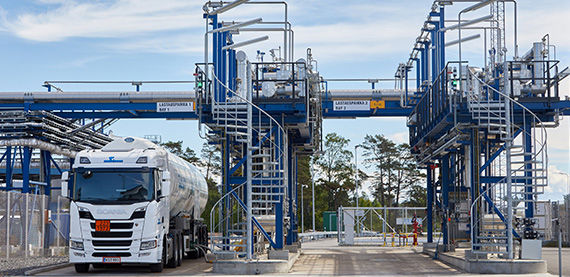
“One of the benefits for us and for our logistics companies is that when using Integrated Operations, we no longer have trucks lining up any more. The delivery truck drivers know when to arrive because they have their own loading slot in the system. It allows them to plan their deliveries more effectively. Also, our intention is to reduce idle time. The entire booking system has streamlined our actions. We do not have to do manual work and fill in Excel sheets. On the whole, it has been a very meaningful investment,” says Marko Kontio.
Jani Hautaluoma, Senior Business Manager, LNG and Renewable Gas, from Valmet, explains: “This terminal is the first to reverse the supply chain. Loadings are not waiting for orders from the enterprise resource planning (ERP) system. Instead, they come directly from our DNA Integrated Operations and then go to the ERP. This has resulted in a huge improvement in operational efficiency. Also, congestion peaks can be optimized.”
Smooth truck loading
When a truck starts to load LNG, Tuomas explains using the automation system’s display how the flow rate starts to increase. He also notices the pressure of the emergency shutdown (ESD) link that is connected to the truck. If a disturbance situation should occur, the pressure in the link will be lost, and the valve will be closed. At the moment, there are two loading docks in use for the trucks.
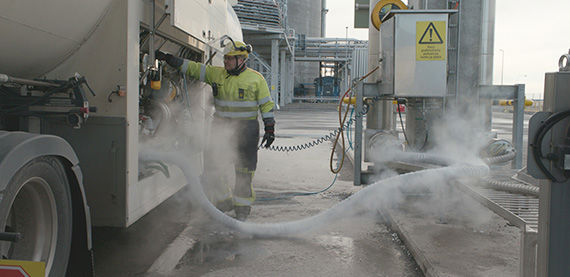
Marko Vähäkuopus, a driver for Gasum, is loading LNG. One of the DNA Integrated Operations displays is located next to the loading station. Marko uses the system already as a matter of habit. After having entered the order number into the system, the procedures conveniently move forward. This makes his journey quick and easy.
“Loading completed” is seen on the display in the control room. Marko Vähäkuopus goes to the control room service hatch to receive the waybill, which is already printed automatically for him. A few friendly words are exchanged, and Marko then can continue on to his destination with the LNG cargo.
Wind conditions affect the LNG vessel’s arrival
“When the LNG vessels are approaching the port, the wind speed has to be sufficiently low. Otherwise, the vessel is not allowed to dock. The final decision is made by the ship pilot. At the very end, the vessel is helped with two tugboats to make it to the dock,” says Vesa Barsk.
The safety instructions are strict on how to get the LNG pumped to the storage tank in the terminal step by step. One of the operators enters the vessel and cooperates with the vessel staff. Personal protective equipment, such as safety shoes, a safety helmet and protective cryogenic gloves, are a must in the vessel. The terminal has to be prepared for possible leaks and explosion hazards.
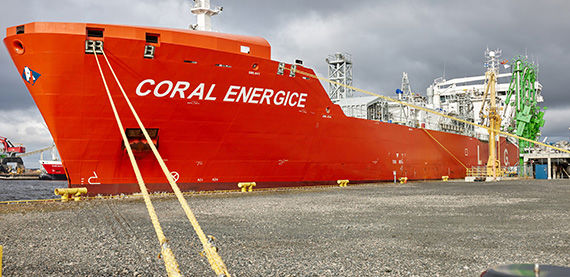
When Vesa is in the field to follow the procedures, his colleague Onni Harri stays in the control room. Using the automation system, he is able to see how the unloading is progressing.
Collaborating with local service
The terminal has a maintenance contract with Valmet. Marko Kontio emphasizes how important it is to get services in your own language. Moreover, the local Valmet office is located nearby. Arto Eronen, Valmet Application Specialist, is the main contact to actively support the operators in their work.
The display graphics were originally developed together. If some new needs arise, Arto is the person to step in. He is able to do some changes remotely, but sometimes he also visits the terminal.
“In the terminal, we rely on Valmet’s automation, information management system with reporting and terminal management. Now, when we are able to foresee the incoming trucks without paying too much attention to those details, we can focus on other items to develop our operations further. In the big picture, the Manga Terminal is playing an essential role in supporting Finland’s emission reduction targets,” Mika Kolehmainen concludes with satisfaction.
For more information:
Mikko Haapaniemi
mikko.haapaniemi at valmet.com